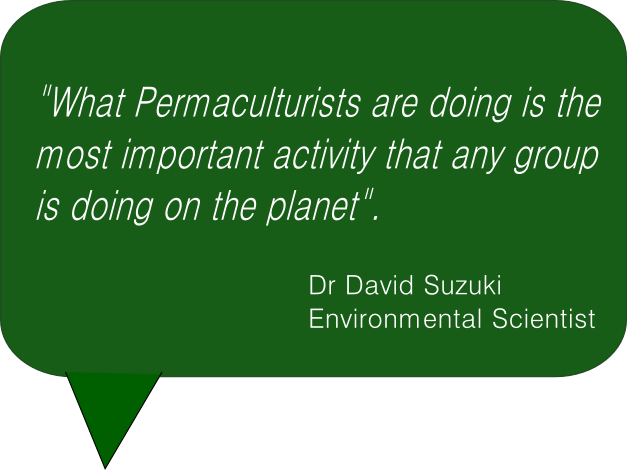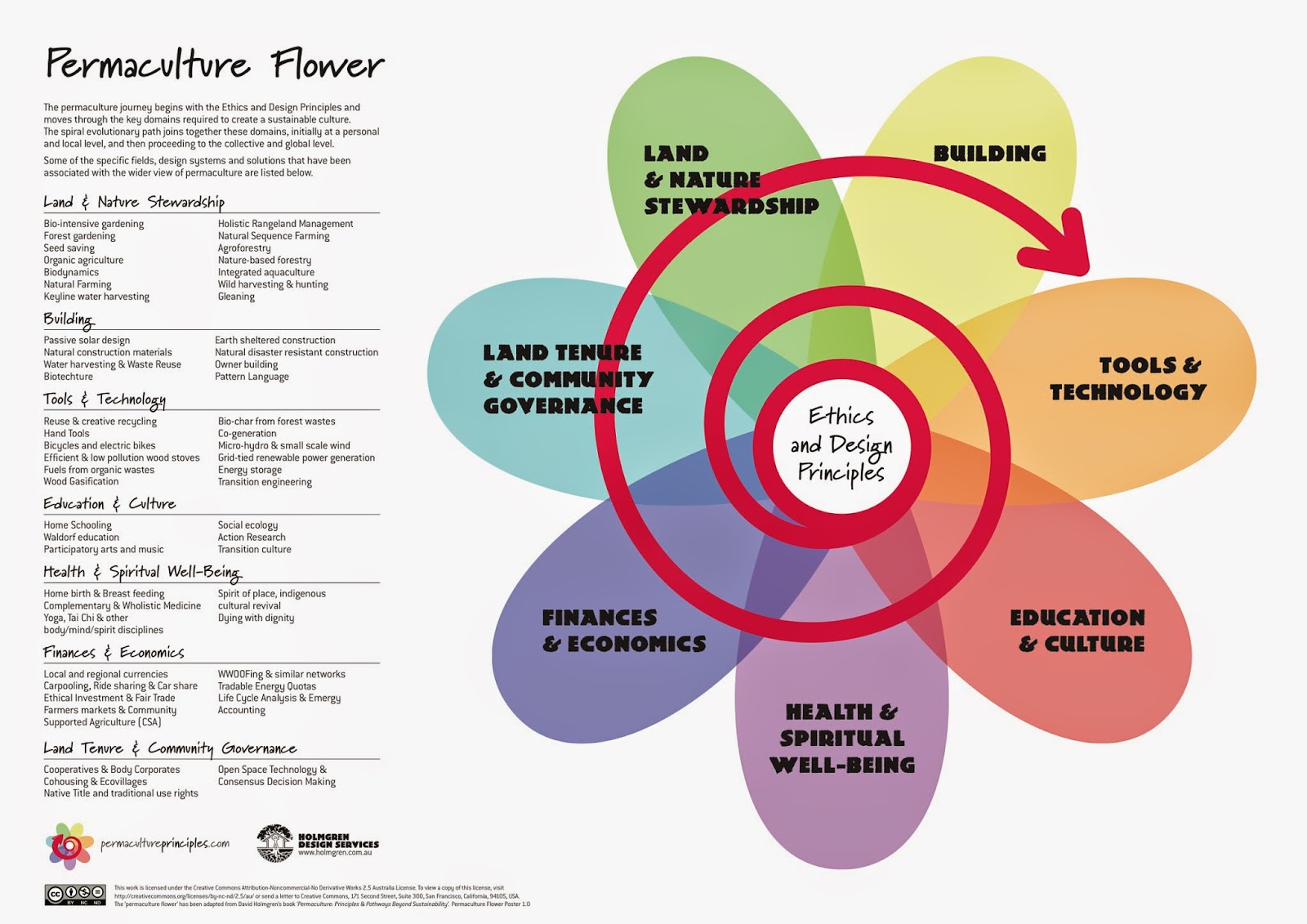Although I'm primarily concerned with natural health-care and disease prevention, I believe that some discussion on permaculture has a place within this blog and is worth your consideration. I imagine that you are reading my articles because of your interest in natural heath-care and your desire to lead a healthier and happier life.

It has been said that once you do a PDC (permaculture design certificate) that you will never view the world the same again. From personal experience that is true. Since completing my PDC in 2007, I have a far better understanding of the world's natural processes and the ability to find solutions and work around limitations on our own property.
This article is to introduce you to permaculture and it's basic principles.
Follow-up articles will focus on some practical ways you incorporate some permaculture principles into your life.
What is Permaculture?
The concept was created in the 1970's by Australians Bill Mollison an ecologist and one of his students David Holmgen.
Permaculture is a practical approach using effective design solutions for the problems facing modern society based on a philosophy of 'think global - act local'.
Permaculture is the conscious design of a sustainable future based on co-operating with nature and caring for the Earth and its people.
Permaculture can be applied to all types of properties, whether it's a broad acre farm, a suburban house block, even a rented inner city unit or a place of work.
Today, permaculture has developed from its origins in Australia into an international movement with many thousands of followers, each one applying permaculture principles in their own unique way.
Central to Permaculture are the 3 Ethics & 12 Core Principles -
Earth Care
Reducing our impact on the Earth by, encouraging natural habitat, building healthy soil, reducing consumption and energy use thus reducing pollution.
People Care
Empowering us to be more responsible and self-reliant and reaching our to our families, neighbours and the wider community.
Fair Share
Is about finding balance in our lives. What is enough? If you have anything that's surplus to your needs - share it.
Core Principles of Permaculture
- Observe and interact –Take time to understand your environment before making changes.
- Catch and store energy – Harness and conserve energy in all forms, from solar to water.
- Obtain a yield – Ensure that your system is productive and provides something useful.
- Apply self-regulation and accept feedback – Reflect on what works and what doesn’t, and make adjustments.
- Use renewable resources – Maximise the use of renewable, sustainable, and local resources.
- Produce no waste – Everything should be reused, repurposed, or recycled.
- Design from patterns to details – Look at the bigger picture first, then focus on the details.
- Integrate rather than segregate – Promote relationships between elements, so they support each other.
- Use small, slow solutions – Start small, make gradual improvements, and grow sustainably.
- Value diversity – Biodiversity strengthens resilience and stability in ecosystems.
- Use edges and value the marginal – The edges, where different systems meet, often hold the most potential.
- Creatively use and respond to change – Embrace change and adapt your systems accordingly.
The Underlying Philosophy
At its core, permaculture is about working with nature rather than trying to dominate it. It’s based on the belief that we can design systems that are regenerative, providing for human needs without degrading the environment. Permaculture encourages a deep respect for the earth, recognising that sustainable living requires an interconnected approach, where every action has consequences for the larger ecosystem.

Summary
Permaculture is not just a gardening technique—it's a way of thinking and living that promotes sustainability, self-reliance, and ecological balance. By following its principles, we can design systems that are regenerative and sustainable, creating a harmonious relationship between humans and the natural world.

